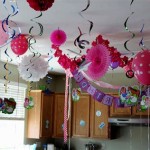Home Decor Craftsman Style
The Craftsman style, born in the late 19th and early 20th centuries, represents a reaction against the ornate Victorian aesthetic. Emphasizing simplicity, functionality, and the beauty of natural materials, it remains a popular choice for home decor today. This style celebrates handcrafted items and honest construction, creating a warm and inviting atmosphere.
Key elements define the Craftsman aesthetic. Natural materials like wood, stone, and leather feature prominently. Oak, in particular, is a favored wood, often left with a natural finish or stained in warm, earthy tones. Stone fireplaces, exposed beams, and brick accents further enhance the natural, organic feel.
Built-in furniture, such as bookshelves, window seats, and cabinets, is another hallmark of Craftsman design. These built-ins maximize space and contribute to the sense of order and functionality. They often feature simple, straight lines and are crafted from the same materials as the rest of the house, creating a cohesive look.
Color palettes in Craftsman homes tend towards earth tones, reflecting the style's connection to nature. Muted greens, browns, yellows, and blues create a calming and comfortable environment. These colors are often seen in walls, textiles, and decorative elements. Accent colors are used sparingly and typically stick within the same earthy palette.
Textiles play an important role in softening the lines of the Craftsman style and adding warmth. Natural fabrics such as linen, cotton, and wool are preferred. Patterns are often geometric or inspired by nature, featuring motifs like stylized flowers, leaves, and trees. Handwoven rugs and tapestries can further enhance the handcrafted feel.
Lighting in a Craftsman home is both functional and decorative. Stained glass, mica, and art glass are commonly used in light fixtures, adding touches of color and intricate detail. Pendant lights, wall sconces, and table lamps with simple geometric shapes and metal bases complement the overall aesthetic. Emphasis is placed on warm, ambient lighting that creates a cozy atmosphere.
Decorative elements in Craftsman homes are carefully chosen and often handcrafted. Pottery, ceramics, and metalwork with simple designs and natural finishes are common. Artwork featuring landscapes, nature scenes, and abstract designs can further enhance the aesthetic. Clutter is avoided, maintaining a sense of order and simplicity.
Fireplaces are a focal point in many Craftsman homes, symbolizing warmth and gathering. They are typically constructed of brick or stone and feature a prominent mantelpiece, often made of wood with simple detailing. The area around the fireplace often serves as a central gathering space, anchored by comfortable seating.
Windows in Craftsman homes are designed to maximize natural light and connect the indoors with the outdoors. They are often grouped together or feature multiple panes, creating a distinctive look. Leaded glass and stained glass accents can add artistic flair while maintaining the overall simplicity of the style.
Hardware, such as door handles, hinges, and drawer pulls, also contributes to the Craftsman look. These details are typically made of metal, often with a dark or hammered finish. Simple, unadorned designs are preferred, reflecting the style's emphasis on functionality.
The Craftsman style extends beyond interior design to encompass the entire home, including the exterior and landscaping. Low-pitched roofs, wide eaves, and exposed rafters are common architectural features. Landscaping often incorporates native plants and emphasizes a natural, unmanicured look.
Achieving the Craftsman look involves careful attention to detail and a focus on quality materials and craftsmanship. While authentic antique pieces can be incorporated, reproduction furniture and decor are widely available. Whether renovating an existing home or building a new one, adhering to the core principles of simplicity, functionality, and natural beauty will ensure a successful Craftsman design.
Modern interpretations of the Craftsman style often incorporate contemporary elements while staying true to the spirit of the original. This can involve using updated color palettes, incorporating modern furniture pieces, or simplifying some of the traditional details. The adaptability of the Craftsman style allows it to remain relevant and appealing to contemporary homeowners.
Ultimately, the Craftsman style offers a timeless appeal through its emphasis on quality, craftsmanship, and connection to nature. Its enduring popularity reflects a desire for comfortable, functional, and aesthetically pleasing living spaces that transcend fleeting trends.

Pin On Kay Living Room

Craftsman Style Home With Neutral Interiors Bunch Interior Design Ideas

Step Inside 7 Craftsman Homes That Are All About Cozy Grandness Architectural Digest

Decorating Ideas For Craftsman Style Homes Riverbend Home

Decorating Ideas For Craftsman Style Homes Riverbend Home

Decor Ideas For Craftsman Style Homes Decoist

Craftsman Style Home With Neutral Interiors Bunch Interior Design Ideas

7 Key Elements Of A Craftsman Home

Craftsman Style Homes Exclusive Interiors With A Lot Of Character

Light And Dark Decor In Craftsman Home Town Country Living
Related Posts







